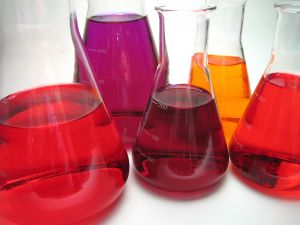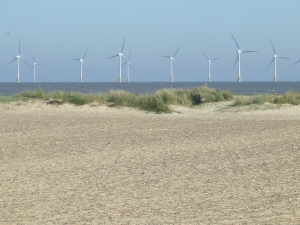Hello everyone,
Welcome to another post as we bid adieu to 2016 and usher in 2017 with considerable optimism and hope.
Whimper or bang

The question remains whether we ended 2016 with a whimper or a bang? While the jury is still out on this one; the fact remains that from a stock market perspective, the year ended with a bang, what with the DOW reaching an all-time high in more than a decade. 2016 was probably like the proverbial curate’s egg – good in parts. While crude oil did not necessarily find its sweet spot on price, OPEC‘s decision to cut production was news to cheer about, though in the “sheikhs vs shale fight” [Yahoo Finance], round one went in favor of shale and the US continues to be a critical swing producer, thanks to technological advancements in fracking that has lowered the threshold price of oil for frackers to stay afloat and even remain profitable.
Ripple effect

The change of guard in the US has resulted in a December 2016 revision of main macroeconomic forecasts for both the US and other major economies. The latest Euromonitor projection for global GDP growth is 3.2 % in 2017 and 3.3% in 2018 [Euromonitor]. Trade effects resulting from prospective US policy changes in combination with additional global factors such as general low confidence, volatile financial markets and decreasing international trade are likely to result in sluggish growth for the developed economies. The “charity begins at home” philosophy is likely to prevail globally with nations being more concerned about their individual GDP growth!
Container shipping companies have been experiencing the pain right through 2016. International trade is likely to take a backseat for some more time.
Upside of resin chemistry

The composites industry is forecast to have sedate growth this year and there is no abatement when it comes to product and applications development. While fluoropolymers are known for their high temperature and chemical resistance, the development of glass fiber reinforced grades of polyvinylidene fluoride (PVDF) provides higher stiffness and strength for applications that include pipes, fittings, valves, nozzles, clamps and fluid connectors. PVDF’s creep and abrasion resistance coupled with long-term UV stability provides an admirable foil to the mechanical strength improvements from glass fiber [Plastics Technology]. The PVDF composite reportedly can be molded to make plastic valves that can be turned on and off frequently without distortion, tower packings that do not sag over time and cable insulations that do not thin out and drip off the protected cable. PVDF resins with a high melt-flow rate (MFR) are used to keep processing temperatures lower – though the addition of glass fibers results in a viscosity increase, the composite can still be injection molded at temperatures below 210°C and extruded at or below 240°C. Flexibility in modifying the PVDF’s molecular structure through co-polymerization with a monomer such as hexafluoropropylene (HPF) results in a range of physical and mechanical properties (especially ductility) that allows variation in glass fiber content (%). Excellent results were achieved in flame burn-through resistance tests (using propane torch) with a glass fiber loading around 20%. The composite outperformed aluminum in burn-through results – 430 seconds versus 85 seconds for the metal.
Fiber reinforced unidirectional (UD) tapes are now being considered for truck trailer floor panels, side walls and bulkhead of commercial vehicles resulting in lower trailer weight and lower fuel costs. Using either glass or carbon fiber and a thermoplastic matrix, the UD tapes have short manufacturing cycle times and can be processed and deformed by the application of heat [Plastics Today]. Available production techniques include lamination, weaving, overmolding, tape laying and filament winding. The UD tapes have a high density of fibers, high-quality fiber impregnation in the thermoplastic resin, minimal void content and fewer broken fibers [SABIC].
Composites on a high

In late December 2016, Boeing delivered its 500th 787 ( >50% composites) Dreamliner. While order volumes for the Dreamliner have declined in the past few years, there is still an order backlog of 700 that will spill over into the next decade based on current annual production of 144 planes [The Motley Fool]. Airbus was almost spot on in delivering almost 50 of its newest twin-aisle A350 XWB jet that uses more than 50% composites. While aircraft deliveries in general are expected to accelerate in 2017, the industry is preparing for a slowdown in orders as airlines adjust to rising oil prices and a deceleration of passenger traffic growth [Financial Times]. The International Air Transport Association (IATA) is forecasting traffic in 2017 to slow down to 5.1% (from 5.9% in 2016) while capacity is still showing signs of growing at 5.6% (from 6.2% expansion in 2016). The global airline industry is expected to make a net profit of $ 29.8 billion in 2017 and total revenues of $736 billion – representing a 4.1% net profit margin [Arabian Business Community].
Apparently there are no headwinds that affect the growth of composites in the aerospace sector in the near future considering the heavy backlog of orders for the 787 Dreamliner and A350 XWB.
Offshore wind power – unstoppable

The barriers to offshore wind power have been formidable. Europe has been the undisputed leader in harnessing offshore wind energy. Their success story over the years has resulted in costs dropping dramatically to even a record-low of $67/MWh for a 350MW farm in Denmark [Utility Dive]. Global wind energy experts anticipate significant future cost reductions for offshore wind power. In the median scenario, experts anticipate an average 30% reduction in the levelized cost of energy (LCOE) by 2030 (relative to a median-expert baseline cost of $169/MWh in 2014) with costs falling by 41% by 2050. The cost of offshore wind power, now in early commercialization, is expected to be 25% lower by 2030 and 38% lower by 2050 relative to the same 2014 fixed-bottom baseline. Floating offshore wind power costs are expected to dip faster than fixed-bottom, with costs converging over time. The contributors to lower cost – turbine size, longer blades, taller towers and bigger generators. Currently, offshore projects use turbines in the 6-8MW range. 10MW turbines are poised to take off in the next few years and 11MW by 2030. Turbine size alone can contribute to around 18% reduction in LCOE by 2030 apart from positive impacts on upfront CAPEX cost and OPEX (operating expenditure).
Carbon fiber producers have their task cut out in making the fiber available through plant expansions. Does size matter when it comes to offshore wind turbines? You bet!
Upping the ante in defense

Geopolitics is yet again in the forefront nowadays. It’s not just the new US administration which is bent on military build-up. From Europe all the way to China, the next decade will be marked by an increase in defense spending amid rising feuds and pockets of instability [Bloomberg]. Global defense expenditures rose to $1.57 trillion in 2016 from $1.55 trillion in 2015. China’s defense budget will almost double from $123 billion in 2010 to $233 billion in 2020. European Union (EU) members boosted their combined budget to $219 billion in 2016. The US is still the world leader in defense spending at $622 billion in 2016. It’s going to be a bonanza for composites globally in the defense sector.
High modulus glass fiber producers would probably be rubbing their hands in glee and looking at capacity expansions.
Substitution of die-cast metals with plastics and composites is a constant ongoing exercise in the automotive sector. The only polyphthalamide (PPA) with an aromatic content of more than 50% by weight from Royal DSM is targeting powertrain, transmission, chassis and thermal management applications along with industrial applications that includes reinforcing with carbon and glass fibers (as the case may be) up to 50% [Design News]. The new grade of PPA with a glass transition temperature >160°C is claimed to have outstanding mechanical, thermal and chemical properties.
Composites indispensable in lightweighting

With rising crude oil prices, the “pain at the pump” is back with higher gasoline prices. Automakers are constantly working to improve their fleets’ fuel economy. The real growth however lies ahead when the need to reduce mass from today’s cars climbs to 15% and higher [Plastics News]. A new study conducted by the Center for Automotive Research (CAR) found that in order to reach 15% weight reduction, a huge shift to use of composites, especially CFRP, was an absolute necessity. The components include pillars, cross beams and rails amongst others.This, in spite of the fact that the era of growth in US auto sales (cars and light trucks) apparently is over judging by the 17.6 million vehicles sold in 2016 – marginally higher than the 17.5 million sold in 2015. The auto industry is entering 2017 with analysts projecting the first significant decline in eight years [Automotive News]. The cumulative effect of rising gas prices and rising interest rates have been a dampener on household budgets. We should have more updates on automakers’ forecast for 2017 at the North American International Auto Show in Detroit in mid-January.
The concept of complete automated production lines for filament wound composite tanks for CNG and hydrogen-powered vehicles is gaining popularity [Plastics News]. Kautex is promoting the concept of tanks with a blow molded thermoplastic liner (polyethylene or nylon) subsequently filament wound with epoxy based CFRP. Extensive tests that include permeation, rupture, pressure and bonfire testing (to simulate car crash/fire) showed how the composite tank slowly melts and evenly releases the gas that burns up ultimately. On the contrary, steel tanks just explode. The key to performance and safety is the patented boss design (where hoses go into the tank).
SMART composites

Can car manufacturers overcome engine downsizing constraints such as increased temperatures and pressures through materials technology? Apparently so if one were to go by Solvay‘s new 35% glass fiber reinforced polyamide66 that integrates an unique smart molecule, self-reinforcement technology that can resist continuous heat stress of new generation engines [Plastics Today]. This new technology remains inactive during injection molding of car parts leaving the material behaving like a high-flow PA66. During the vehicle’s use, the elevated temperatures activate the smart technology leading to rapid cross-linking that boosts the mechanical properties far beyond the initial values. Ageing tests over 3000 hours at 220°C demonstrate very high retention property with tensile property gain >50% without degradation of elongation at break. The composite is intrinsically heat-friendly and eliminates the need for heat shields that may be required when using conventional materials.
Economic priorities redefined

The global economic order with its hierarchy of economic priorities has been turned on its head following Brexit and the outcome of the recent US election. Achieving strong inclusive national-level growth to revive a declining middle class, kick-starting stagnant incomes and curtailing high youth unemployment is now taking precedence [World Economic Forum] through populist political measures. Multilateralism is likely to make way for bilateral and regional trade and investment agreements. As stated in the earlier section of this post, with global trade at its nadir, it’s a state of “each nation unto its own” to create domestic demand, employment and achieve GDP growth.
Collaborate to succeed

The bottom line? Irrespective of political upheavals in 2016 with more to follow this year, technological developments in the composites industry continue to abound. Here again, while the European Union and the US pursue their own objectives for the betterment and growth of the industry, the fact that raw material producers, processors and end users are successfully collaborating in an effective manner ensures that breakthroughs are always a given and we can expect more success stories of composites storming the metals bastion and creeping up to the double-digit mark, when it comes to material substitution.
Till the next post,
Cheers,
Twitter: @essjaycomposite
We specialize in customized Market Analysis Reports in Composites
You must be logged in to post a comment.